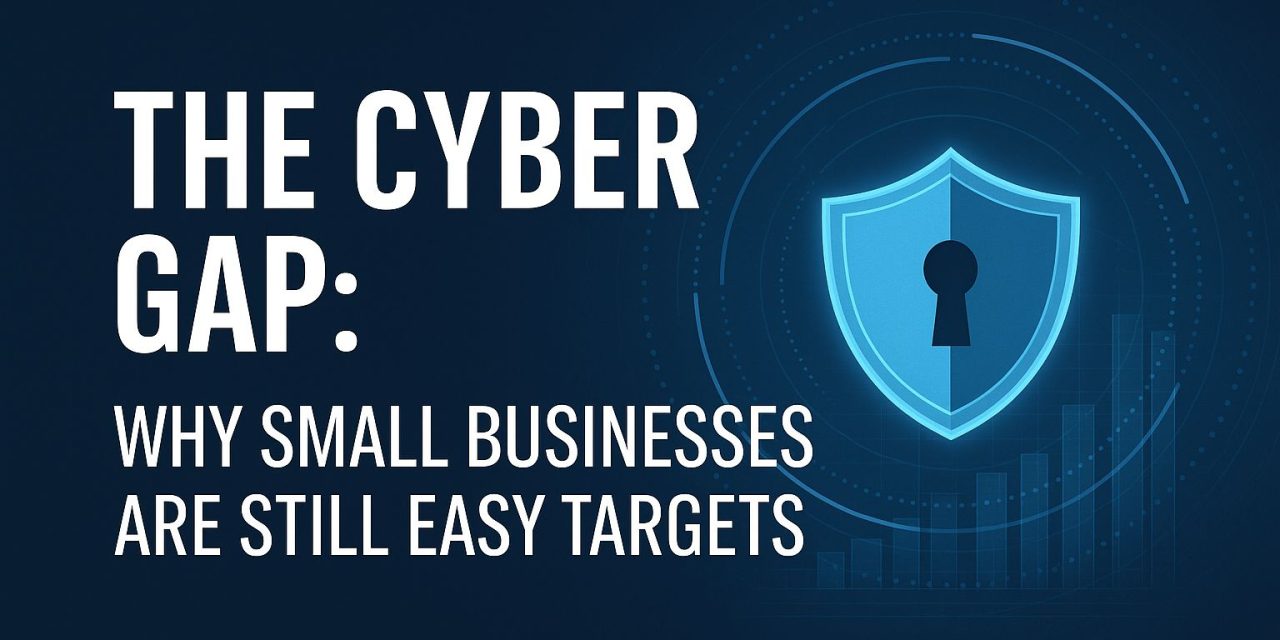Let’s be honest—if you’re running a small business, cybersecurity probably isn’t your favorite topic.
You’re juggling cash flow, inventory, staffing, customers, and a dozen apps just to stay afloat. Adding “threat intelligence” or “ransomware resilience” to your to-do list? Not happening.
Hackers know this.
That’s why small and midsize businesses (SMBs) have become their preferred targets. Easier than hitting a hardened enterprise, but still valuable enough to extort, exploit, or pivot through to bigger fish.
The numbers back it up.
SMBs: Big Impact, Low Defense
According to the FBI’s Internet Crime Complaint Center (IC3) (1), business email compromise (BEC) losses hit $2.7 billion in 2022. Many of these attacks started in small companies.
A 2023 CISA survey showed that less than 40% of small businesses have a cybersecurity plan at all. Only 17% had implemented MFA organization-wide.
Yet small businesses power 44% of U.S. economic activity and employ nearly half the private workforce. They’re the literal backbone of the economy—and they’re exposed.
Why Are SMBs So Vulnerable?
Here are some of the usual culprits:
- Outdated systems: still running Windows 7 or on-prem Exchange.
- Weak passwords: reused logins across multiple platforms.
- Lack of training: employees don’t recognize phishing or social engineering.
- No backups or recovery plans: one crypto locker can shut down the whole shop.
- Third-party exposure: vulnerable through vendors or cloud services.
Most small teams simply don’t have the staff or budget to implement a robust cybersecurity program—let alone monitor it.
Free Resources Actually Worth Using
Here’s the good news: you don’t need a SOC or a six-figure budget to start improving your cybersecurity posture.
Some seriously solid help is available, for free:
- CISA’s Cyber Essentials: a non-technical starter guide.
- SBA Cybersecurity Portal: tailored to small business realities.
- StopRansomware.gov: up-to-date threat alerts, checklists, and playbooks.
- NIST Small Business Cybersecurity Corner: excellent guides, free templates, and risk assessments.
Bookmark those four. They’re updated, practical, and designed for real-world small businesses, not just CISOs.
A Word on Compliance and Insurance
Cyber insurance for SMBs has gotten stricter. Expect questions about:
- MFA use (especially for email and remote access)
- Backup frequency and segmentation
- Employee training
- Endpoint protection
- Response plans
Also, depending on your state or sector, you may be subject to data privacy or breach notification laws—even if you’re a 5-person shop.
Cyber isn’t just an IT issue anymore. It’s operational risk.
Final Thought: You Don’t Have to Be Perfect—Just Better Than Before
Most attackers are looking for low-hanging fruit. If you can:
- Use a password manager
- Turn on MFA everywhere
- Run backups and test them
- Train your staff on phishing
…you’re already ahead of the curve.
Perfection isn’t the goal. Resilience is.
And with the right guidance (and a little push), even a scrappy small business can become a much harder target.
Want straight-talk IT guidance like this? Subscribe to ITGuru365 and get real-world cyber strategy without the fluff.
- Sharif, O., Hoque, M., Kayes, A., & Sarker, I. (2020). Detecting Suspicious Texts Using Machine Learning Techniques. Applied Sciences, 10(18), 6527.






Comments